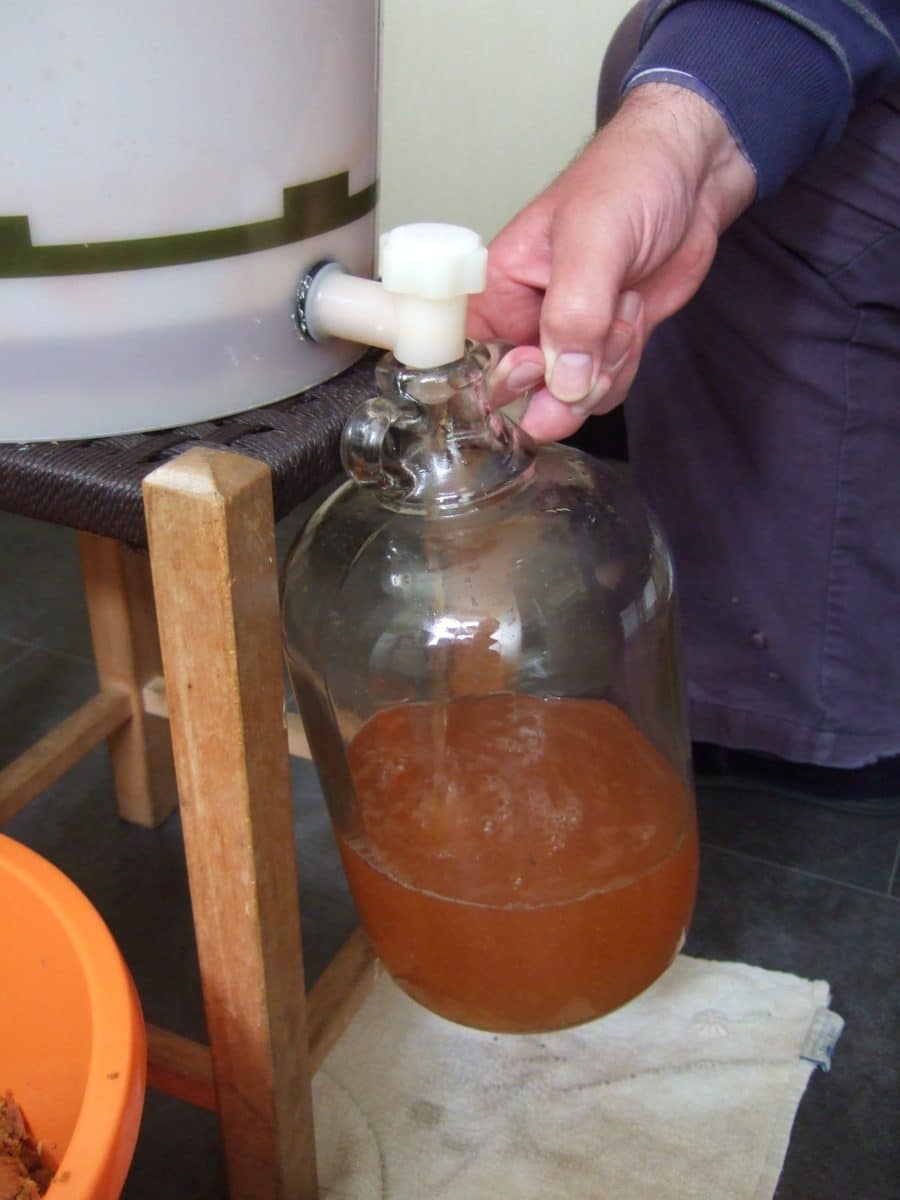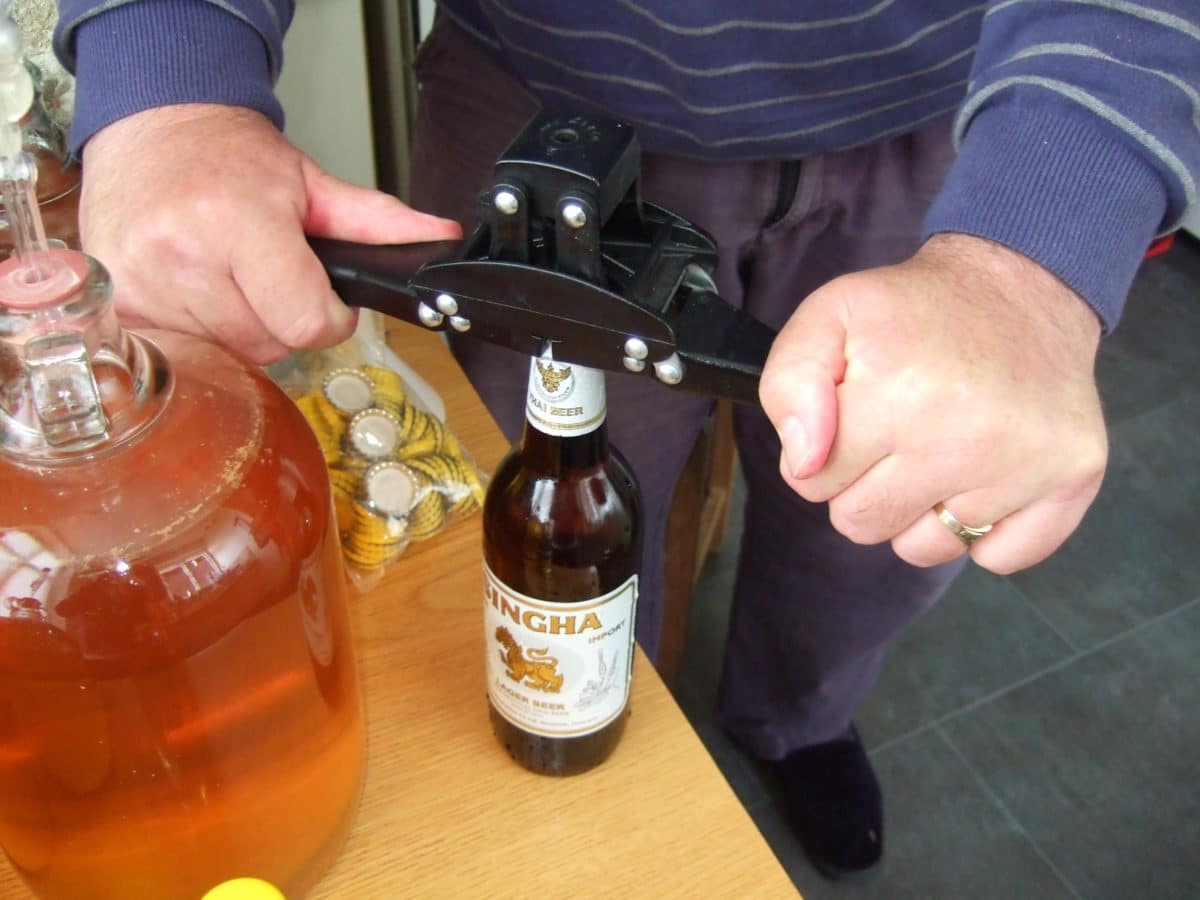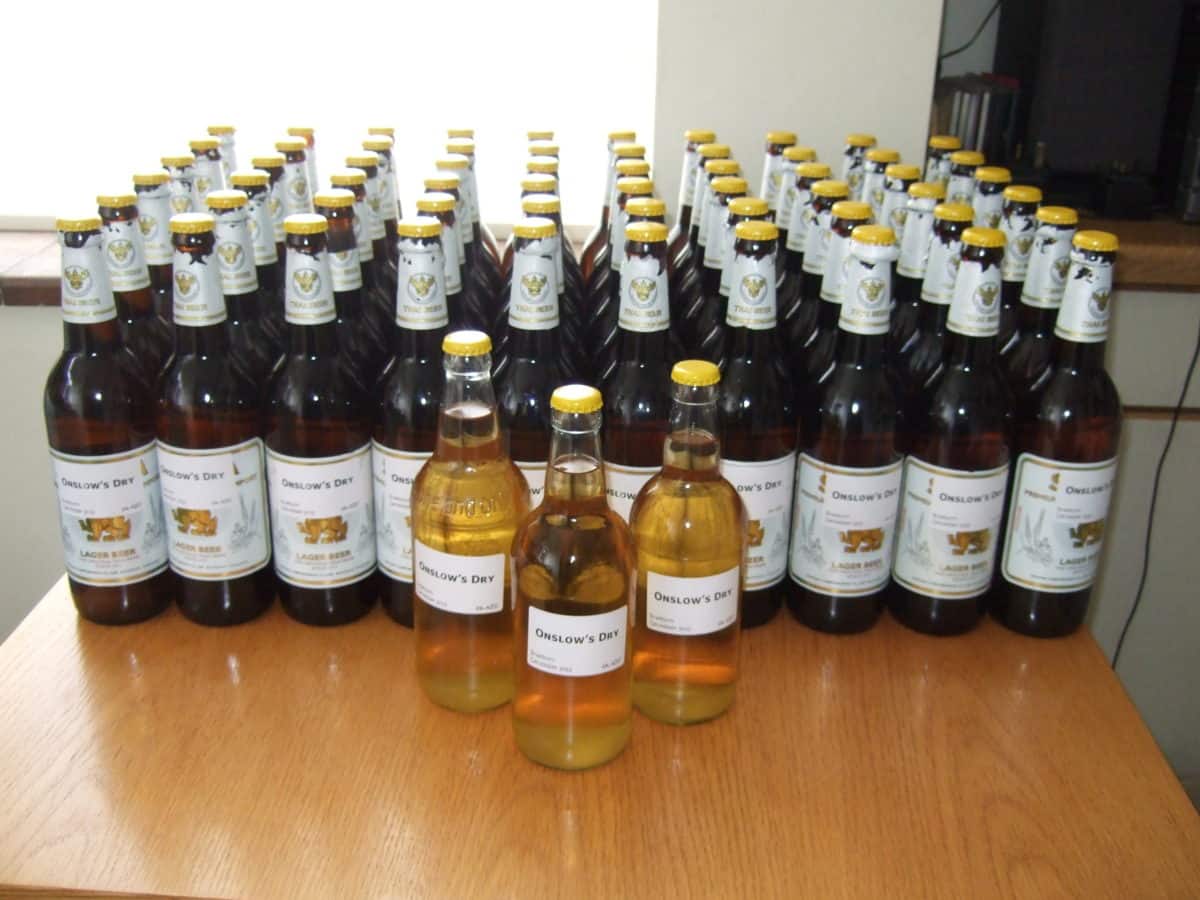Golden, crystal-clear, kitchen-made hard cider might seem like the reward of an expensive and labor intensive hobby. Not so with a simple and easy method I call “Juice and Strain.” Five years ago, two friends and I, tired of dumping barrow-loads of surplus garden apples onto the compost heap, decided to make them into cider. We had no wish to invest in the traditional bulky, laborious to use, and expensive equipment. An easier, quicker and cheaper method was called for.
My daughter offered us her little domestic juicer, which would accept seedless apple slices, for the task. Off we went, and three hours later three of us had generated just three gallons of juice — and a horrible mess in the kitchen. Worse, we’d managed to take only a small bite out of our half-ton bumper crop of apples.
By chance, one of our number was in a charity (thrift) shop a few days later and spotted a 450W centrifugal whole fruit juicer on the shelf. To our delight we discovered that our productivity was transformed with a tenfold increase in efficiency. Once again the kitchen ended up sticky and messy from apple juice spillages, so I fashioned a “juice containment and delivery adaptor” (plastic hose) to funnel juice to a “juice clarifier and solids separator” (a fine mesh bag in bucket). And so our clean, easy, efficient and relatively low-cost Juice and Strain cider making process was born.
Our hard cider making was guided throughout with reference to an excellent book “Craft Cider Making” by Dr. Andrew Lea. In practice, our method comprises the following steps:
1. Gather your apples. A hand-held apple picker works well and is safer than harvesting from a ladder. Any kind of apples can be used, although a blend will often produce a better end product. Generally, dessert (sweet) and higher acidity (sharp) apples will be the most commonly available. A 4:1 mix of sweet and sharp is often recommended. If you like a more astringent cider then add crab apples to the mix at about one part in ten. A more interesting and complex tasting cider can be produced if you are lucky enough to have access to true bittersweet and bittersharp cider apples, thanks to their relatively high tannin content.
2. Double wash all apples rejecting any that show signs of mold. Bruised fruit and windfalls may be used for making hard cider but not fresh apple juice, due to possible contamination with bacteria that do not wash off. Sanitize all kit parts that will come into contact with the fresh apple juice for a couple of hours before juicing. Immerse in a sodium metabisulphite solution prepared by dissolving four Campden tablets per gallon of tap water. Overall, remember that fresh apple juice and hard cider are foodstuffs and all appropriate food safety and hygiene steps should be followed.
3. Set up your Juice and Strain kit as shown in our short YouTube video. Place your juicer on a towel on a table, and clamp a hose in place with the outlet directed into a fine mesh straining bag held loosely in a plastic bucket that has lots of small drainage holes drilled into its base. The bucket should fit snugly into the top of a 5 gallon (US 6 gal) fermenter bin fitted with a drainage tap at its base. The juice collection assembly then sits on top of a box, or a stool, that allows a demijohn to be placed underneath the drainage tap. The more powerful a centrifugal juicer you have, the faster you will be able to process your apples.
With the last juice hand-wrung out of the straining bag, a fine brown pulp residue is left in the bag and you do not want this in your cider. Overall, 8 kilograms (17.6 pounds) of fruit are needed to generate about one gallon of juice and, with two people working, 15 Imperial gallons (18 US gallons) of clear juice can easily be produced in a few hours.

4. Using a hydrometer, measure the specific gravity (SG) of your apple juice. A target minimum is 1.045, which after fermentation will give an alcohol by volume (ABV) content over 5%. This will ensure storage stability. Extra sugar can be added at this point if your reading is low. Add your yeast as instructed. We use a commercial champagne yeast (saccharomyces bayanus) rather than relying on the natural yeasts contained in the fruit. We do this for consistency and reliability. The added yeast overwhelms wild yeasts present and gives a crisp, dry and refreshing product. Typically, a 5 gram sachet of yeast is sufficient to inoculate 5 Imperial gallons (6 US gallons) of fresh apple juice. We use presanitized glass demijohns fitted with airlocks exclusively for fermenting the apple juice with no added sulphite.
5. At an ambient temperature of around 18°C (64°F) the fermentation should be completed in three weeks, with a measured SG of 1.000 or below. If higher than this, allow the fermentation to continue. We have found that our hard cider has cleared at this point, and have yet to encounter any pectin haze problems. The cider is drinkable at this stage. Our preference, however, is to allow the product to age and mature on the settled fermentation sediment (the lees) and bottle it the following spring.
6. Pre-sanitized screw cap bottles can be used for the still (nonbubbly or non-effervesant) and dry (no additional sugar added after fermentation) product. Fill these leaving 2.5 cm (1 inch) of air at the top (headspace) to allow for thermal expansion. The bulk of our hard cider we “bottle condition” to produce a pleasing, light effervescence. With a minimum of agitation and disturbance, we rack off 5 Imperial gallons (6 US gallons) of product, sufficient to fill 40 Imperial pint (48 US pint) bottles, into a fermenting bin with a tap at the base. We then make a syrup of 113 grams (4 ounces) of sugar in a minimum of hard cider which we very gently blend back into the bulk liquid. Overall, we are trying to minimize exposure to air, and oxygen uptake, which might cause flavor impairment or spoilage. We then fill pre-sanitized beer bottles to within 2.5 cm (1 inch) of the top and seal with a crown cap.
On storage for a month at spring temperatures, a secondary fermentation occurs and our product is ready for drinking. Those who enjoy a sweeter cider can add sugar syrup to taste when serving it. Adding too much priming sugar, after fermenting, can cause excessive foaming at bottle opening or, in the extreme, hazardous “bottle bombs.”
We haven’t lost a single gallon of cider to spoilage in our five years of using Juice and Strain. Rather we, together with family and friends, have enjoyed over 200 Imperial gallons (240 US gallons) of golden, crystal-clear, kitchen-made hard cider. I wish you the same success. ![]()


